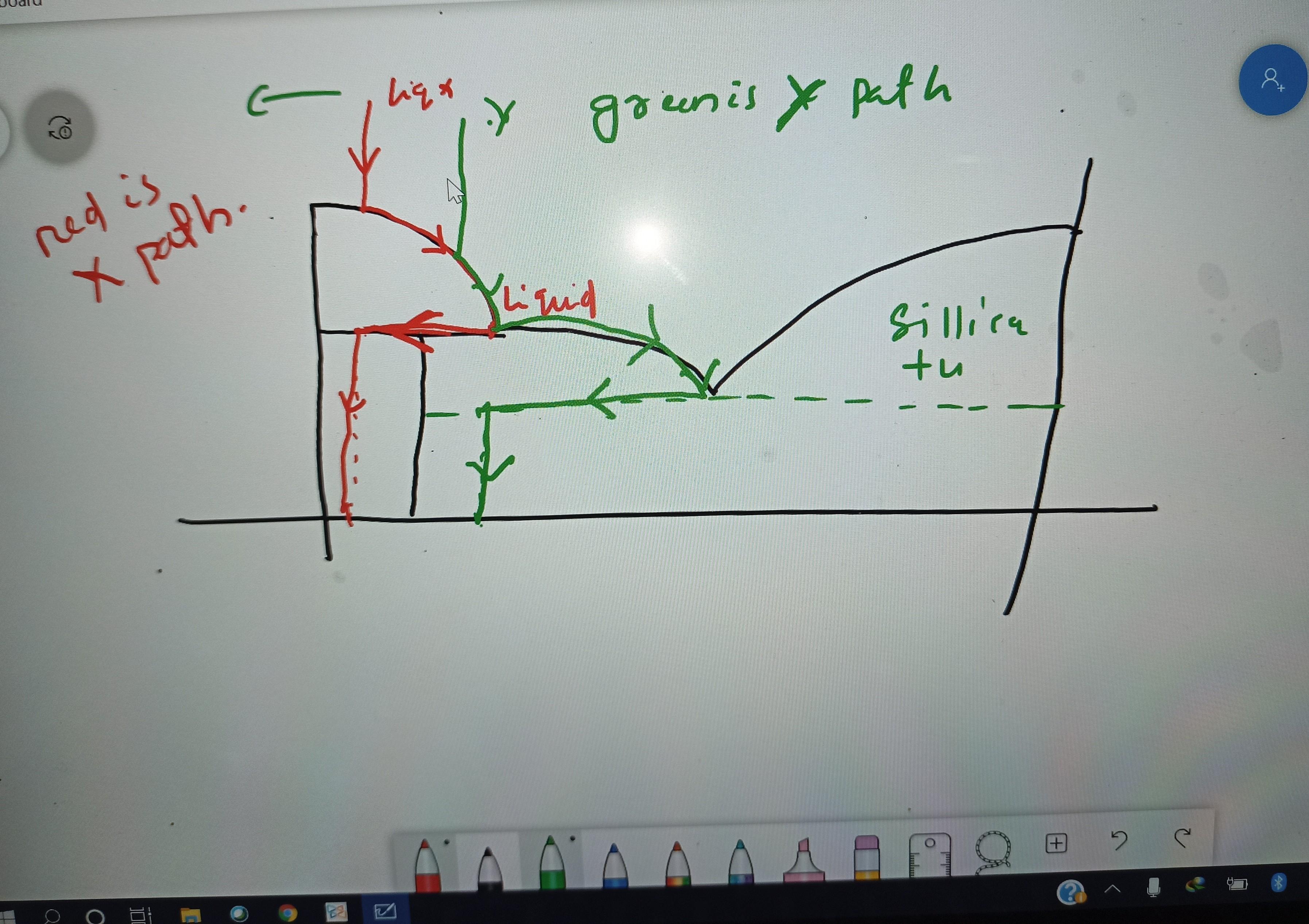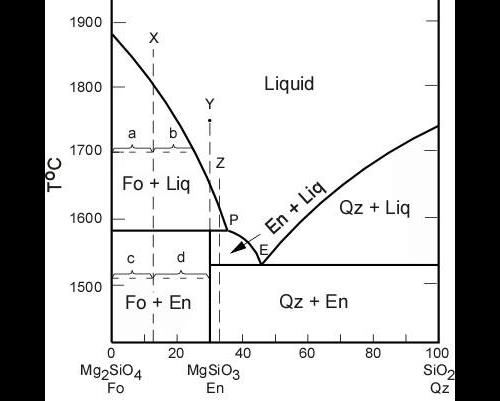Time management is very much important in IIT JAM. The eduncle test series for IIT JAM Mathematical Statistics helped me a lot in this portion. I am very thankful to the test series I bought from eduncle.
Nilanjan Bhowmick AIR 3, CSIR NET (Earth Science)Shivam Sharma posted an Question
- CSIR NET
- Earth Sciences
The figure below represents an isobaric binary system involving the solid phases a, b and c and their liquidus phase relations. based on the figure, answer the
The figure below represents an isobaric binary system involving the solid phases A, B and C and their liquidus phase relations. Based on the figure, answer the following questions. Liquid X Liquid Y liquidus . Field 2 T(C) Field 1 B Composition What phases (among A, B, C and liquid) are stable in Field 1 and Field 2, respectively? At which point in this figure cana 'corona' texture develop? Trace the equilibrium crystallization histories of liquid X and liquid Y.
- 1 Likes
- 7 Comments
- 0 Shares
-
![comment-profile-img]() >
>
-
![comment-profile-img]() >
>
-
![comment-profile-img]() >
>
Sajan sarthak Best Answer
what you want exactly say me
![eduncle-logo-app]()
i want u to explain about the formation of corona texture
![eduncle-logo-app]()
ok
![eduncle-logo-app]()
Corona texture is formed due to incomplete reaction of mineral with melt, so what i think is Corona texture is developed at Point P of the diagram
![eduncle-logo-app]()
yes of course wait for my explanation.
![eduncle-logo-app]()
see the attached file
![eduncle-logo-app]()
I hope you understand and please mark my answer as best /thank you.. Put up extra effort to make you understand
![eduncle-logo-app]()
dear student please mark answers as best because other students are also watching these answers so don't mark best to replies..
![eduncle-logo-app]()
But in ur previous answer, u have written that Corona texture developed at Point T, That's why confusion is created in my mind
-
![comment-profile-img]() >
>
-
Shivam sharma
Equilibrium History of X and Y ?
-
![comment-profile-img]() >
>
Sajan sarthak
In field 1 A and C is stable in field 2 only C and liquid present At point P the Corona texture will develop if the bulk composition is Liquid X. Corona will have forsterite inside and enstatite outside. see the attached file for last one
![cropped1509582612496027155.jpg]()
![eduncle-logo-app]()
I think Corona texture is developed at Point P
![eduncle-logo-app]()
sorry wrongly written
![eduncle-logo-app]()
corrected now
-
![comment-profile-img]() >
>
Rahul kumar
In Field 1: Phase A+C will remain stable In Field 2: Phase C+Liquid will remain stable When a crystal is in disequilibrium with the melt, the crystal is resorbed. Incomplete resorption leads to the crystal being armored by another crystal, which is in equilibrium with the melt. This texture is developed at peritectic reactions (P).
![cropped5925058065414538415.jpg]()
![eduncle-logo-app]()
Corona texture developed at point P or T ?
Do You Want Better RANK in Your Exam?
Start Your Preparations with Eduncle’s FREE Study Material
- Updated Syllabus, Paper Pattern & Full Exam Details
- Sample Theory of Most Important Topic
- Model Test Paper with Detailed Solutions
- Last 5 Years Question Papers & Answers
Sign Up to Download FREE Study Material Worth Rs. 500/-










 >
>
 >
>










Rahul kumar![best-answer]()
CRYSTALLIZATION SEQUENCE OF COMPOSITION X: As a liquid of composition X is cooled, nothing will happen until the temperature is equal to the liquidus temperature. At this point crystals of A begin to precipitate out of the liquid. As the temperature is further lowered, the composition of the liquid will change along the liquidus toward the peritectic (P), and the crystals forming from the liquid will always be pure A until P is reached. At the temperature of the peritectic, note that three phases must be in equilibrium, A, liquid, and C. At this point some of the crystals of A react with the liquid to produce crystals of C. The reaction that takes place can be written as follows: A + Liq= C After all of the liquid is consumed by this reaction, only crystals of A and C will remain. The proportions of A and C in the final crystalline product can be found by applying the lever rule. CRYSTALLIZATION SEQUENCE OF COMPOSITION Y: Since composition Y lies between C and B, it must end up with crystals of C and B. If such a composition were cooled from some high temperature where it is in the all liquid state, it would remain all liquid until it reached the liquidus temperature at about 1600. At this temperature crystals of A would begin to precipitate and the composition of the liquid would begin to change along the liquidus toward the peritectic, P. At P, all of the A previously precipitated would react with the liquid to produce crystals of C. After this reaction has run to completion, and all of the previously precipitated A is consumed, there would still remain some liquid. With decreasing temperature, more crystals of C would form, and the liquid composition would change along the liquidus toward the eutectic, E. At E crystals of B would begin to form, the temperature would remain constant until all of the liquid was used up, leaving crystals of B and C as the final solid. Note that because composition Y lies very close to the composition of pure C, the final crystalline product would consist mostly of C with a very small amount of B.
Nice Explaination